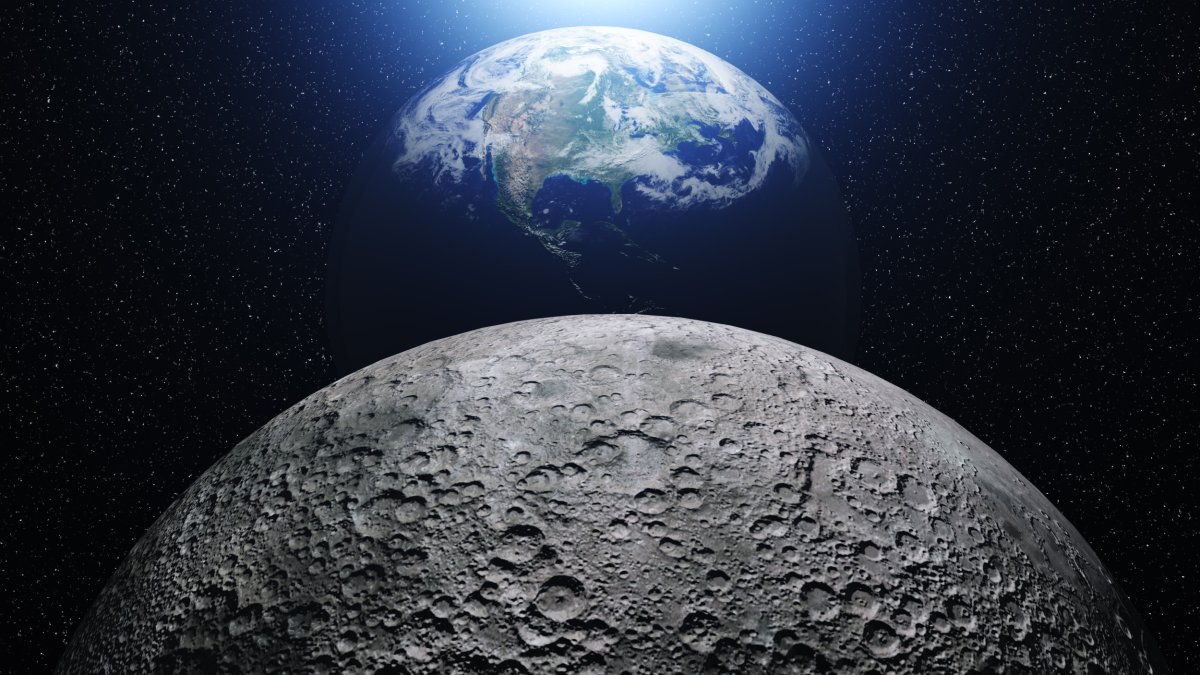Unusual material discovered deep within the center of the Earth are the remains of an ancient planet that collided with Earth billions of years ago, scientists have found.
The blobs of strange material—known as large low-velocity provinces (LLVPs)—were first discovered by geophysicists in the 1980s, who, at the time, had no idea what they were. Found under Africa and the Pacific Ocean, each blob is made up of different elements and is twice the size of the moon.
Now, scientists have finally solved the mystery. These blobs are actually the remains of an ancient planet that crashed into Earth during the same impact that created the moon. The findings are described in a study published in the scientific journal Nature on November 1.
The moon came to be when the Earth collided with a smaller planet named Theia. However, no remains of this smaller planet have ever been found, which has puzzled scientists for years.

These new findings, however, suggest that it could have been absorbed by Earth. This would have created the strange blobs discovered under the continent of Africa and the Pacific Ocean.
Qian Yuan, O.K. Earl Postdoctoral Scholar Research Associate and leader of the research, first had the idea to study this when attending a seminar on planet formation led by Mikhail Zolotov, a professor at Arizona State University, in 2019.
"Right after Mikhail had said that no one knows where the impactor is now, I had a 'eureka moment' and realized that the iron-rich impactor could have transformed into mantle blobs," Yuan said in a release detailing the study's findings.
The LLVPs were first discovered in the 1980s through the measurement of seismic waves. Scientists discovered that the pattern within the Earth's deepest mantle was different. The seismic waves suggested that the two structures discovered were very high in iron. The high amount of iron meant that the waves slowed down.
Throughout his research, Yuan came up with multiple scenarios on what happened to Theia and how it impacted Earth.
They determined that this collision could definitely have led to the formation of the moon and the blobs. Theia's mantle could also have been incorporated into the Earth's mantle, where it crystallized and eventually formed the blobs.
"A logical consequence of the idea that the LLVPs are remnants of Theia is that they are very ancient," Paul Asimow, the Eleanor and John R. McMillan Professor of Geology and Geochemistry, who also worked on the research, said in a release.
"It makes sense, therefore, to investigate next what consequences they had for Earth's earliest evolution, such as the onset of subduction before conditions were suitable for modern-style plate tectonics, the formation of the first continents, and the origin of the very oldest surviving terrestrial minerals," Asimow said.
Do you have a tip on a science story that Newsweek should be covering? Do you have a question about this story? Let us know via science@newsweek.com.
Uncommon Knowledge
Newsweek is committed to challenging conventional wisdom and finding connections in the search for common ground.
Newsweek is committed to challenging conventional wisdom and finding connections in the search for common ground.
About the writer
Robyn White is a Newsweek Nature Reporter based in London, UK. Her focus is reporting on wildlife, science and the ... Read more
To read how Newsweek uses AI as a newsroom tool, Click here.






